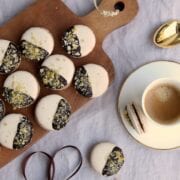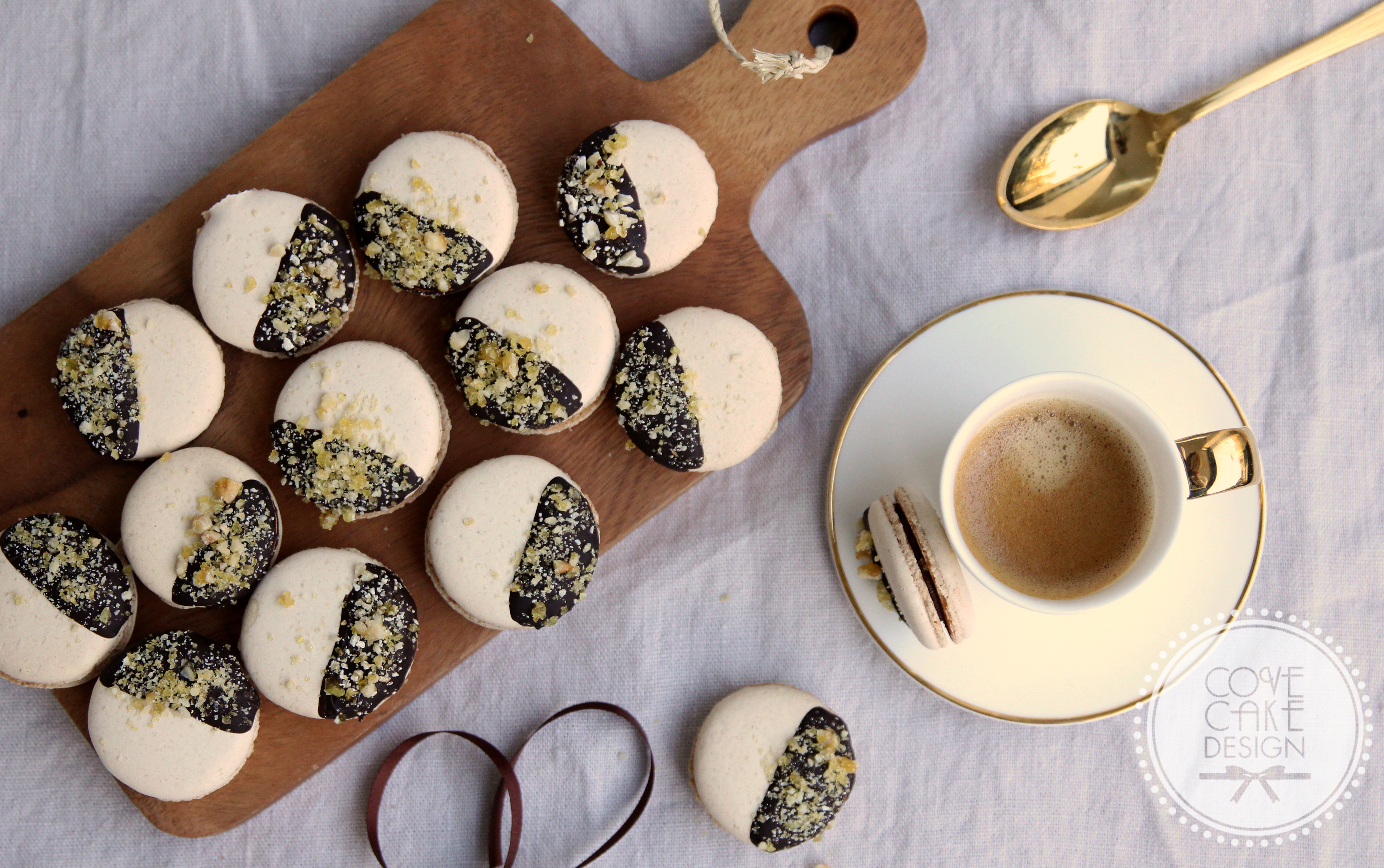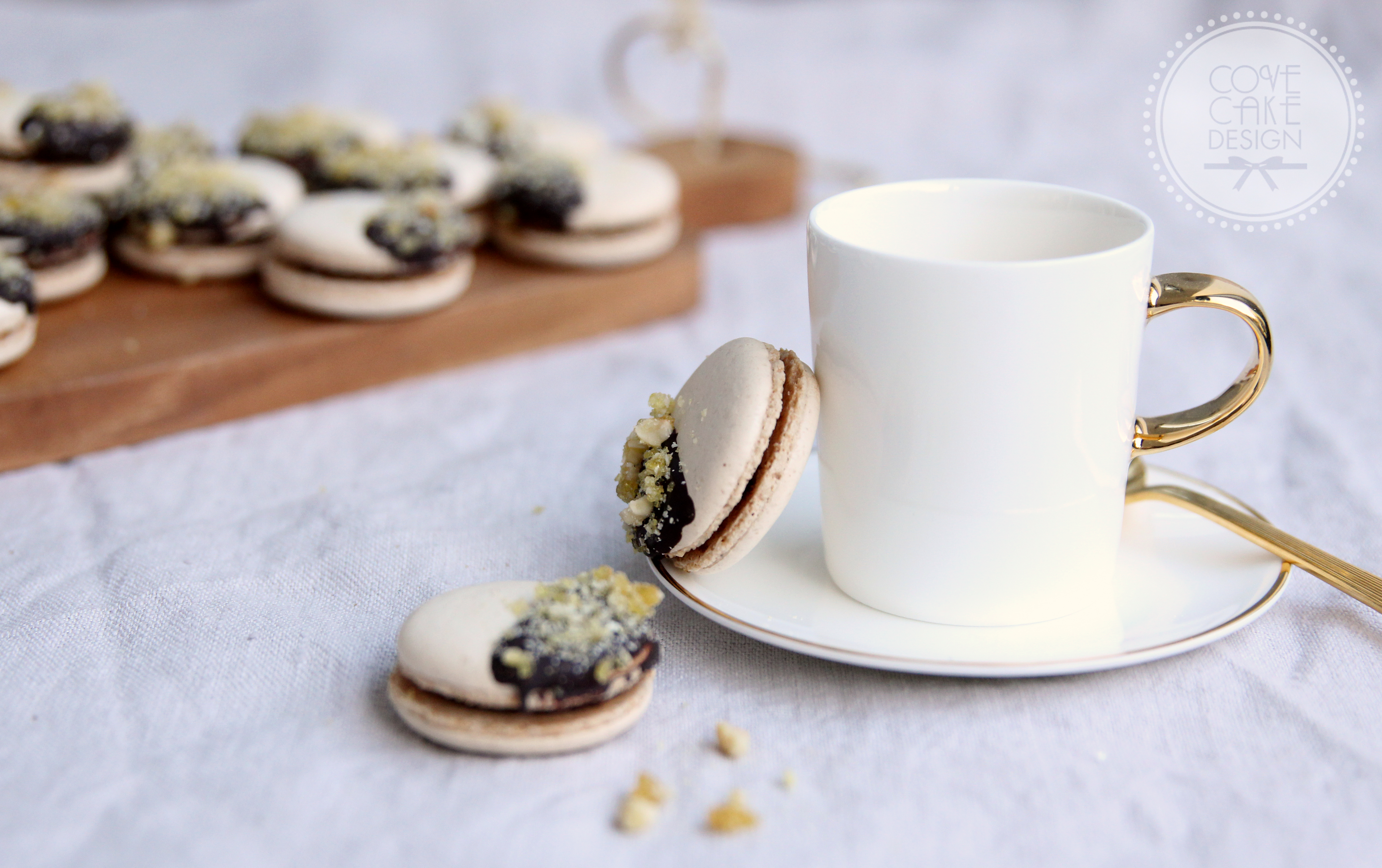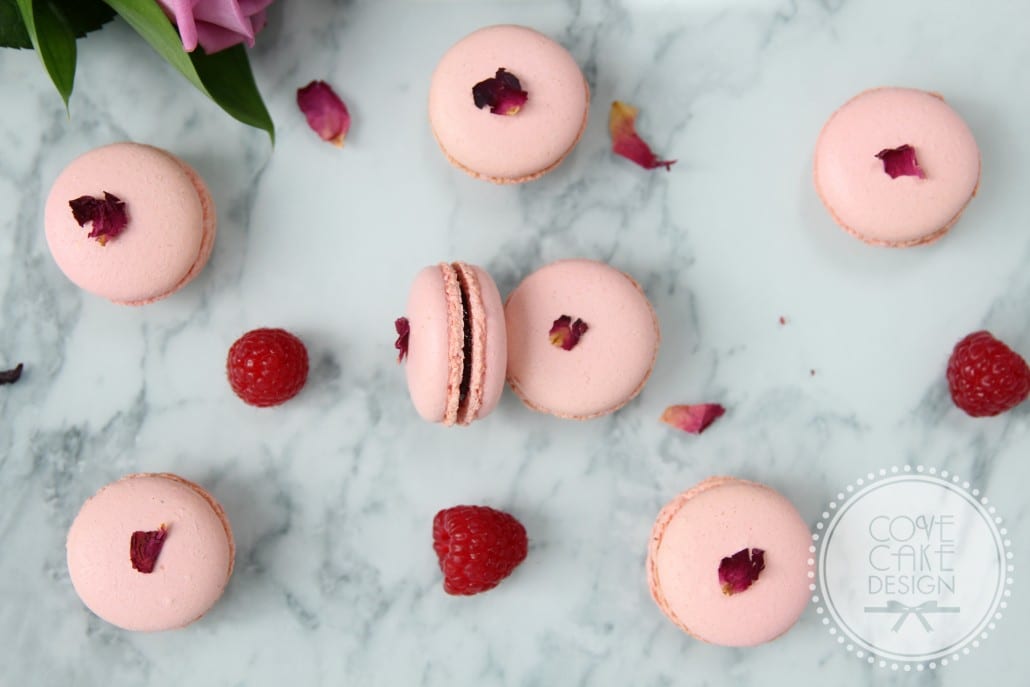Hazelnut Chocolate Orange Macarons
I made these macarons as my edible Christmas gifts last year. The combination of chocolate and hazelnut is a well renowned match made famous of course by Nutella! The addition of orange zest adds a fresh twist and the decoration of dipped chocolate coated in crunchy hazelnut praline adds an additional layer of flavour and luxury….the perfect gift and indeed luxurious teatime treat! Enjoy!
Hazelnut Macarons with Chocolate Orange Ganache and Hazelnut Praline
Ingredients for the Hazelnut Macarons:
- 50g hazelnuts
- 50g ground almonds
- 100g icing sugar
- 100g caster sugar
- 2 x 40g egg white
Ingredients for the Chocolate Orange Ganache:
- 110g 70% dark chocolate
- 100ml pouring cream
- 10g caster sugar
- 25g unsalted butter
- finely grated zest 1 orange
Ingredients for the Hazelnut Praline Decoration:
- 100g 70% dark chocolate, melted
- 75g caster sugar
- 75g skinned toasted hazelnuts, chopped
Step 1: To make the hazelnut macarons, preheat the oven to 170°C/315F. .
Step 2: Place the hazelnuts on a baking tray and place in the oven for approx 10-15mins, shaking every few minutes to turn. Take care not to burn. Remove from the oven and leave to cool slightly before placing in a clean tea towel and rubbing to remove the skin.
Step 3: Place the skinned hazelnuts, ground almonds and icing sugar into a blender and grind to a fine powder. Sieve into a clean metal bowl, discarding any large particles. Add 1 x 40g egg white and mix to form a paste (called the tant pour tant). Set aside.
Step 4: Clean the inside of the metal bowl of a food mixer and the whisk attachment with lemon juice or boiling water to remove all traces of grease. Wipe with paper towel. Place the second 40g egg white into the bowl.
Step 5: Place the caster sugar and water into a small saucepan and bring to the boil, swirling now and then to ensure even heating.
Step 6: Meanwhile whisk the egg white to soft peaks. When the temperature of the sugar syrup reaches 105°C, increase the speed and whisk to stiff peaks. When the syrup reaches 115°C, remove from the heat and pour the syrup in a thin stream into the egg whites. Whisk for approximately 10mins until thick and glossy.
Step 7: Add about a third of the meringue mixture to the hazelnut/almond mixture and fold in to loosen. Then add the rest of the meringue mixture, folding in until it has a ‘flow’ similar to consistency of lava.
Step 8: Fit a piping bag with an 8mm round nozzle and pour in the batter. Pipe small well-spaced rounds of batter approximately the size of a walnut onto a silicone baking mat on a baking sheet (if you don’t have a silicone mat use baking parchment and attach the corners to the tray with a small blob of the batter). Tap the trays on the counter 3-4 times to remove air bubbles. If any fail to pop use a cocktail stick to do so. Leave to form a ‘skin’ for approx 25-45mins depending on ambient temperature and humidity (test by touching gently with the tip of your finger, if skin has formed your finger should come away clean).
Step 9: Bake in the oven for 12-15mins, turning the tray half-way through. Leave to cool completely on the tray before removing.
Step 10: To make the chocolate orange ganache, place the orange zest and cream in a saucepan and heat gently until warm. Remove from the heat and allow the orange to infuse for 1hr. Pass through a fine sieve to remove the orange zest.
Step 11: Add the sugar to the cream and reheat.
Step 12: Meanwhile place the chocolate into a mixing bowl.
Step 13: Pour the cream over the chocolate and stir until chocolate is melted.
Step 14: Finally add the butter and stir to combine. Allow to cool and refrigerate for approximately one hour before filling the macarons
Step 15: To make the hazelnut praline, heat the caster sugar in a small saucepan until dissolved. Swirl gently to ensure even heating. When the syrup is a golden brown colour, remove from the heat and add the chopped hazelnuts. Stir with a spatula before transferring to a piece of baking parchment to cool. When cool, break into a food processor and pulse gently to form a medium coarse powder.
Step 16: To finish the macarons, dip half the macaron shells in the melted chocolate and place on a piece of baking parchment. Sprinkle with the hazelnut praline and leave to set.
Step 17: Using a piping bag fitted with an 8mm nozzle, fill the other half of the macaron shells with the chocolate orange ganache and place the chocolate praline coated shells on top. Place the macarons in the refrigerator. They are best eaten after 24 hours and within 72 hours of filling.






